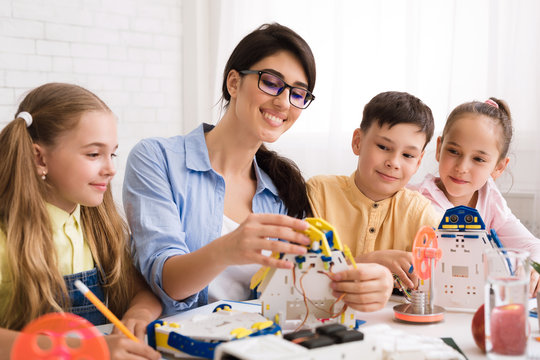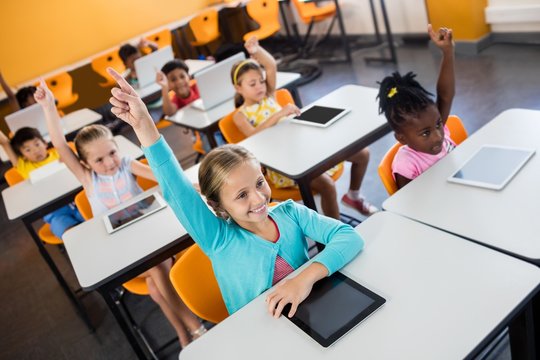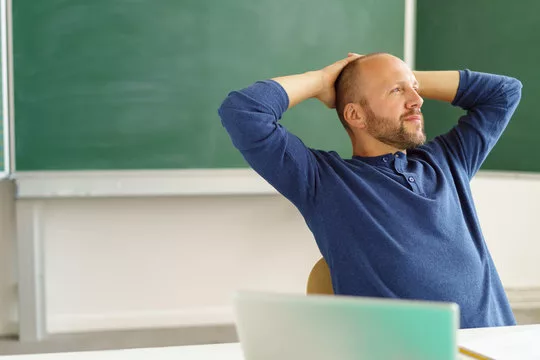As technology continues to become more and more prevalent in our everyday lives, it’s important to consider how we can best use it in the classroom to maximize learning. In this post, we’ll explore some of the ways technology can be used to enhance the educational experience for students. Read on to discover how you can use technology to make learning more engaging and effective!
The Benefits of Technology in Education
Technology has become an integral part of modern education. Technology offers many benefits for students and educators: from providing tools for students to stay organized and engaged in their classes to providing new ways for educators to engage students in learning.
One of the most important advantages of technology in education is its ability to keep students engaged in their classes. With so many distractions available online and in the classroom, it is essential that educators find ways to keep their students focused on their studies. One way to do this is to use technology to provide engaging content and activities for students. For example, educators can retain students engaged in their classes by using video lectures and interactive exercises when they are not present in the room; technology has also the ability to help educators engage students in their learning. By providing tools for tracking student progress, educators can ensure that all students are reaching the same level of understanding. Additionally, by providing tools for collaboration and communication, educators can help students build relationships with one another and learn from one another.
Overall, technology has many benefits for students and educators when used in the classroom. By using technology to engage students and provide engaging content and activities, educators can help them to keep focused on their studies while also helping them learn more effectively.

Strategies for Integrating Technology into the Classroom
When it comes to the use of technology in the classroom there are a few things that teachers should keep in mind. Teachers should first and foremost make sure that students have access to the technology they need to be successful. Second, teachers should be certain to use technology in a way that is helpful to learning. Finally, teachers should be aware of the potential pitfalls of technology use and take steps to avoid them.
One of the most important things teachers can do when it comes to using technology in the classroom is to ensure that students have access to the devices they need. This means that teachers should make sure that all students have laptops or tablets for example and that these devices are properly configured. It is also important for teachers to make sure that devices are kept up-to-date with the latest software and security patches.
Teachers should be sure to use technology in the classroom in a way that is beneficial to learning. This means, for example, that they should not use technology as a replacement for face-to-face interaction. Instead, teachers should use technology as a way to supplement face-to-face interaction and help students learn more effectively.
Finally, teachers should be aware of the potential pitfalls of using technology in the classroom. This means, for example, that they should be careful not to overuse technology or rely on it too much instead of relying on traditional teaching methods.
The Impact of Technology on Student Engagement
Technology has a significant impact on student engagement, both in the classroom and beyond. By using technology in the classroom, educators can help students stay focused and engaged while learning. Additionally, technology can be used to enhance student collaboration and communication.
One of the most important ways to use technology in the classroom is to keep students engaged. By using interactive tools and games, educators can keep students entertained and engaged in their learning. Additionally, by using technology to create multimedia content, educators can engage students on a more personal level. By providing engaging content, educators can help students stay motivated and interested in their education.
Beyond keeping students engaged, technology can also be used to improve student communication. By using tools like chat rooms and video conferencing, educators can help students communicate more effectively with one another. Additionally, by providing online resources, educators can help students access information from anywhere in the world. By using technology in this way, educators can help students learn in a more effective way.

How to Assess the Effectiveness of Technology Use in Education
When it comes to assessing the effectiveness of technology use in education there are a few key questions that need to be answered. One of the most important is how well students are using the tools and resources that are available to them. It is also important to determine how much time students spend using these tools as well as what types of learning outcomes they achieve. Additionally, it is important to consider how technology is impacting teacher productivity and engagement.

Best Practices for Using Technology in the Classroom
There are a number of ways to use technology in the classroom to help students learn. Some common techniques include using digital tools such as wikis, online calculators, and video lectures. Additionally, teachers can use technology to create interactive whiteboards and projectors that can be used to display images and data.
When selecting technology tools, it is important to consider the student’s level of computer proficiency and the type of learning that is being targeted. For example, students who are just starting to learn computer skills may benefit from using simpler tools such as wikis, while more advanced students may be better served by using more sophisticated software. Teachers should also be aware of any special needs of their students, such as those with disabilities who may need access to special software or those who are deaf or hard of hearing.
Finally, it is important for teachers to keep track of how technology is being used in the classroom so that they can make adjustments as needed. This can be done by recording how often different tools are used, how long students spend on each task, and whether any problems or glitches occur.

Tools and Resources for Implementing Technology in Education
Developing a Technology Curriculum
There are many tools and resources available to help educators use technology in the classroom. Some of the most popular include:
Some teachers prefer to use technology as a supplement to traditional teaching methods, while others see it as a replacement for traditional instruction. It is important to find what works best for your students and your classroom. Some common tools used in classrooms include:
- Laptops and tablets: These devices can be used for educational purposes, such as viewing videos, downloading materials, and working on projects. They can also be used for entertainment purposes, such as playing games or watching television.
- Google Classroom: This online platform allows educators to create and manage their own courses. They can also share materials with other educators, and receive feedback on their courses.
- Slack: This messaging app is popular among educators because it allows for quick communication between students and teachers. It can also be used for group work, such as assigning readings or discussing concepts.
- Edmodo: This online platform allows educators to create and manage their own courses, as well as share materials with other educators. They can also receive feedback on their courses.
- Whiteboard software: This software can be used to create diagrams and presentations, which can be shared with other educators.
Utilizing Digital Learning Tools
One way to maximize learning in the classroom is to utilize technology tools. Digital learning tools allow students and educators to access and share materials, collaborate during assignments, and track their progress. Additionally, these tools make it easier for teachers to display relevant information across multiple devices.
While there is no one-size-fits-all approach when it comes to using technology in the classroom, a few helpful tips include:
- periodically assess how students are using digital learning tools and adjust accordingly;
- provide engaged student use materials that promote critical thinking;
- choose appropriate digital curricula tools that meet the needs of your school district or classroom curriculum;
- integrate mobile device activities into instruction where possible;
- allow students to use technology for independent learning;
- provide feedback and support to students as they use technology in the classroom.
There are a variety of digital learning tools available, so it is important to choose the right ones for your classroom. Some helpful resources include:
- edtechhub.com – This website provides a comprehensive list of digital learning tools, as well as tips on how to use them effectively in the classroom.
- techtools4teachers.com – This website provides a variety of resources, including a list of digital learning tools and tips on how to use them in the classroom.
- ccmemberzone.com – This website provides a variety of resources, including a list of digital learning tools and tips on how to use them in the classroom.
- techtips4kids.com – This website provides a variety of resources, including a list of digital learning tools and tips on how to use them in the classroom.
- wikihow.com – This website provides a variety of helpful tips on how to use digital learning tools in the classroom.
Partnering with Online Resources
Technology can play an important role in enhancing learning in the classroom. However, there are a number of tools and resources that educators should be aware of in order to maximize their use.
One of the most important aspects of using technology in the classroom is to ensure that all students have access to the necessary devices and software. Some devices, such as laptops, can be expensive, so it is important to find ways to make them available to all students. For example, some schools allow students to bring their own devices to class, while others provide discounted or free devices to students who need them.
Another important aspect of using technology in the classroom is to ensure that the devices are properly configured. Many devices come with default settings that may not be optimal for learning. It is important to research the best settings for each device and make sure that they are used in the classroom.
One of the most common tools that educators use to enhance their classrooms is online resources. Online resources provide students with access to a wide variety of content, including videos, articles, and lessons. They can be used to supplement or replace traditional teaching materials.
educators should partner with online resources in order to maximize their effectiveness. For example, some online resources may have exclusive content that cannot be found in other sources. In order to compensate for this limitation, educators should create rich scaffolds for students using these resources. This involves creating overviews of key topics so that students have an understanding of the overall concept before

Creating a Positive Digital Learning Environment
When it comes to learning in the digital age, every teacher has their own preferences for how they would like their students to interact with technology. However, there is no wrong way to use technology in the classroom if it’s done correctly. Below we will discuss four ways that teachers can create a positive digital learning environment for their students:
Utilize Technology as a help resource
Teachers should always keep technology resources available as aids in aiding students with comprehension and/or organizing data. For example, using Google Sheets to track student progress or providing flashcards on Swiggy while studying for tests. By taking advantage of these tools, teachers are not only giving their students an extra tool to help them succeed but they’re also giving them access to valuable information whenever they need it.
Bridge the Gap Between Classroom and Home Circumstances
Many times when school is cancelled due to bad weather conditions or other emergencies back at home, children may lose time practising what they learned in class the day before. If a teacher can find ways to supplement lessons through multimedia or online resources even when classes aren’t currently occurring then this will bridge any gaps and make sure that all of the material is still being mastered by the end of the semester/term.
Connect Students With Active Learning Communities Outside of School Hours
One great way for teachers to connect with their students after school hours is through social media platforms such as Twitter and Instagram (or any other platform that suits your curriculum). Through these networks, teachers can share resources such as worksheets or digital Assignments that were used in class during the day so that students have instant access and don’t have to search across multiple websites. Additionally, social media platforms provide a great opportunity for more open dialogue between educators and their students about what material needs more attention or clarification – something which cannot be done within traditional educational structures. Lastly, by connecting with active communities outside of school hours many problems such as boredom caused by lack of stimulation during after-school hours can be eliminated entirely!
Use Technology Safely and Appropriately
Just as important as using technology safely is teaching kids how best to use it responsibly – both inside AND outside of school walls! Some common rules when using technology include never accessing personal information through Webcams or logging into accounts without permission; never sharing personal information (like passwords); always staying logged out when not actively using the device; and never leaving devices unattended. By following these simple guidelines, teachers can ensure that their students are using technology in a responsible and safe manner.

Challenges and Solutions for Implementing Technology in Education
Technology use in education is a growing trend, with educators seeing the potential to optimize learning using tools like laptops, interactive whiteboards, and mobile devices. While there are many benefits to incorporating technology into the classroom setting, it can also present some challenges. One of the most important aspects of implementing technology successfully is making sure that all students have access to quality resources and that teachers have the training needed to effectively utilize these tools.
There are a number of strategies educators can use when integrating new technologies into their classrooms. Some popular methods include adopting an “open-source” approach (whereby educators remix available educational resources), utilizing online tutorials and videos, and creating digital portfolios for students. Additionally, effective leadership is critical in helping schools embrace technology as part of their learning environment; for example, providing financial support for new equipment or developing policies concerning IT usage in the school. Overall, while there are numerous challenges associated with using technology successfully in education settings, concerted effort by educators and policymakers will help ensure that students receive maximum benefit from this innovative approach to instruction

Strategies for Developing Digital Literacy Skills
One of the most important pieces of technology in contemporary schooling is digital literacy. This includes understanding how to use computers and other technological devices to access information, create content, and share ideas. It also encompasses using technology for interactive purposes, such as creating multimedia presentations or completing online assignments.
There are myriad ways to foster digital literacy skills in students. Teachers can provide opportunities for instruction and hands-on exploration throughout the school day. In addition, they can create digital portfolios that showcase student work in a variety of media formats. And finally, they can promote collaborative learning by facilitating discussions among classmates on social media platforms or through discussion boards hosted on websites.
Technology should not be viewed only as a tool for instruction but also as an opportunity for students to explore their creativity and problem-solving abilities. accordingly, teachers should scaffold learning with games, puzzles, graphics applications, and other engaging activities that demand user input in order to unlock new content or concepts. Furthermore, parents can play an active role by enrolling their children in online courses or joining them on team projects that require collaboration between multiple users from different countries or backgrounds
How to Create a Safe Online Learning Environment
Leveraging Digital Resources for Enhanced Engagement
Today’s classrooms are inundated with technology. From laptops and tablets to projectors and interactive whiteboards, students have access to a wealth of digital resources that can be used for both individual and group learning (Groves, Fisher & Lowe, 2009). However, like any powerful tool, technology must be used responsibly in order to create a safe online learning environment. Here are three tips for maximizing the potential of technology in the classroom:
- Establish ground rules for screen time: One way to ensure the safety and healthy use of technology in the classroom is to establish clear ground rules about when screens should be turned on and off. This policy should take into account everyone’s needs–from the youngest students who need breaks every few hours to older students who need uninterrupted focus. It’s also important to make sure that devices are set up in a way that allows everyone to easily see and use them.
- Limit access to distracting content: Another way to keep students on task is to limit their access to distracting content, such as photos or videos of friends and family, social media posts, and online games. This can be done by setting specific time limits for screen use or limiting the amount of content that can be viewed at once.
- Respect student privacy: When it comes to student privacy, teachers should take into account their individual needs as well as those of their students. For example, some students may want limited information sharing while others may want complete disclosure. Teachers should also be aware of student sensitivities around topics such as sexual orientation or mental health.
Designing Technology-Based Assignments
Safe online learning opportunities can be created through the use of a variety of technologies, including programs that monitor user activity and track any inappropriate content. Appropriate software also permits instructors to create digital portfolios and encourage students to share their work product with classmates.
Harnessing Innovative Teaching Strategies
When it comes to harnessing innovative teaching strategies, one of the most important things to remember is to create a safe online learning environment. By doing so, you can help your students build the digital literacy skills they need to be successful in today’s world.
One way to do this is to create a learning environment that is both engaging and interactive. This means incorporating technology into your classroom activities in a way that is both fun and educational. For example, you can use online tools to create interactive learning materials or quizzes. You can also use video streaming services like Netflix or Hulu to provide supplementary material for the class.
Another way to create a safe online learning environment is to enforce rules and guidelines. This means setting clear expectations for students and providing clear instructions for how they should behave while online. For example, you can forbid students from accessing pornographic websites or sharing personal information without permission.
No matter what strategies you choose, it is important to make sure that your students are comfortable using technology in the classroom. By doing so, you can help them build the skills they need to be successful in today’s world.
Troubleshooting Common Technical Issues
Creating a safe online learning environment is essential for both students and educators. One way to make sure that your computer users are aware of online safety practices is to introduce technology-based tasks during instructional time. By incorporating digital literacy skills into the curriculum, you can help students be savvy consumers of online content as well as responsible creators of their own information resources.
To help create a safe online space, it’s important for educators to take note of common tech issues and troubleshoot them before they become problematic. For example, if users are encountering problems accessing websites or files, checking browser settings may resolve the issue. In addition, ensuring that all users have up-to-date software and Flash Player installed can prevent crashes or other crashes.
If a student is experiencing difficulties with technology, it’s important to be patient and supportive. Suggesting alternative methods of learning or troubleshooting the issue together can help to build a positive relationship with technology. By taking these simple steps, educators can help ensure that students have the best possible experience when using digital tools in the classroom.
The Role of Teachers in Promoting Effective Technology Use
Technology use in the classroom has become increasingly important as more students are using electronic devices to learn. Teachers have a key role to play in helping students use technology appropriately and effectively so that they can learn and be successful. There are several ways that teachers can help promote effective technology use in the classroom:
- Encourage the use of digital resources, such as eBooks, online articles, and video lectures. Digital resources can be accessed from any device or computer with internet access.
- Help students develop a habit of researching information before using it. This will help them avoid making mistakes when using online resources or taking online exams.
- Make sure all devices are properly configured and backed up before giving them to students. Devices should be regularly checked for malware and updated with the latest security patches.
- Provide guidance on how best to use various types of technology platforms, such as desktops, laptops, tablets, AND smartphones/tablets hybrids (for example, Apple iPads). Each platform has its own set of benefits and drawbacks that must be taken into account when teaching content material.

Looking Ahead: Future Trends in Educational Technology
As technology continues to evolve, so too does the way that educators use it in the classroom. In this section, we will take a look at some of the most important trends in educational technology that are likely to impact teachers and students in the years to come.
One of the most important trends in educational technology is the growing use of mobile devices and apps in the classroom. This is because mobile devices allow educators to provide engaging and interactive learning experiences for their students that can be accessed anywhere, at any time. Additionally, mobile devices can be used to help teachers track student progress and provide feedback on their performance.
Another trend that is likely to continue is the use of artificial intelligence (AI) in educational settings. AI has been shown to be an effective tool for teaching and learning, and it is likely that more educators will start using it in the future. AI can be used to create personalized learning plans for students, monitor their progress, and provide them with feedback on their performance.
Finally, another trend that is likely to continue is the use of augmented reality (AR) in the classroom. AR allows students to see information and data that is overlayed on top of their real-world environment. This can be used to help them learn new information more effectively, and it can also be used to provide learners with hands-on experiences that they would not be able to experience otherwise.
From robotics to virtual reality, technology continues to revolutionize the way students learn and educators teach in the classroom. Technology can be used as a powerful tool to maximize learning when implemented thoughtfully with clear objectives and meaningful activities. Educators must prioritize digital literacy skills while also creating a safe online learning environment for their students. By teaching students how to use technology responsibly, we can ensure that its benefits are maximized throughout the education system for generations of learners to come.
